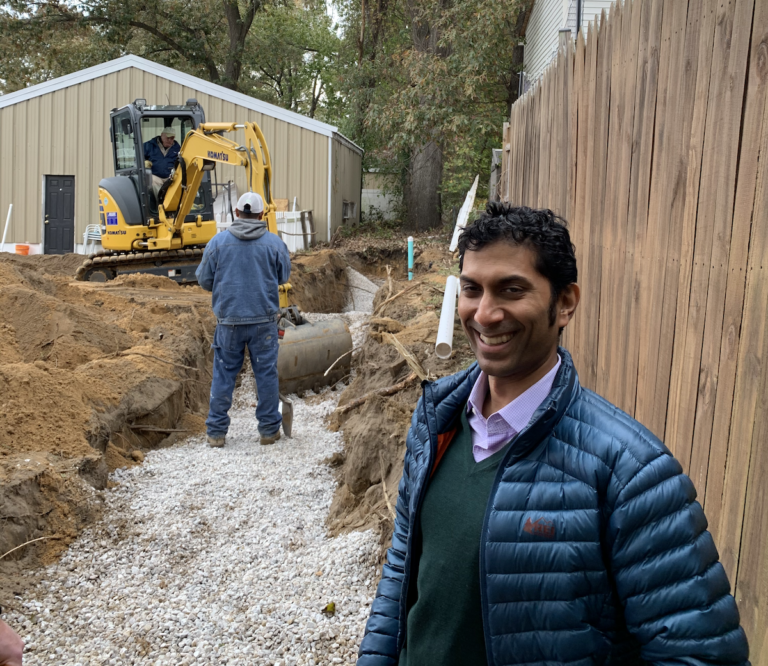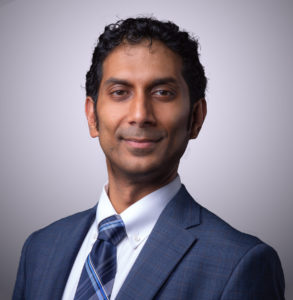
Months into the global battle against COVID-19, individuals at all echelons of government are taking decisions and actions which address and alleviate concerns at a local level. ESAL spoke with Nilesh Kalyanaraman, the health officer for Anne Arundel County in Maryland, about how the county’s department obtains and analyzes information, and how STEM professionals can leverage their skills to support local efforts. Kalyanaraman holds an MD specializing in internal medicine and is a former AAAS science and technology policy fellow.
RD: What is the jurisdiction of the county public health department?

Nilesh Kalyanaraman
Kalyanaraman: At the county level, our focus is on understanding the needs of the community and delivering preventive services. We also influence policymaking based on what we see on the ground. At higher levels of government, the focus shifts away from direct service, towards setting standards and distributing resources.
Our department aims to promote health, and a large part of that focuses on prevention across the county. This includes child health, vaccinations, and screening. We aim to reduce barriers to care and focus on harm reduction centered around drug use, supporting overdose survivors, and connecting them to care. The largest area of our work is focused on disease prevention, which encompasses cancer screening, vaccinations, STIs, and COVID efforts. Overlaid on that is a lot of health equity work to ensure that we put resources into those communities that have historically experienced worse outcomes, which tends to be along racial and ethnic lines.
RD: What is your role in responding to public health concerns as broad as mental illness in homeless populations, pandemic response, and even first line-of-defense for bioterrorist attacks?
Kalyanaraman: My role is to stay alert to what is happening. We are doing that both through data – and data means knowing what it is that we want to look for – and then doing that at a community level. We try to make it a part of our mission to spend more time in the community and stay engaged with people to understand what is happening and what they need help with. By doing so, we are maintaining that human connection.
RD: How do counties get information about COVID?
Kalyanaraman: Given how thinly resources are spread across the board – particularly with every county wanting to be first in obtaining them – it is imperative we keep up to date with information surrounding COVID. Contrary to normal, we are operating in the public lens such that I am learning information from all sorts of mediums, from newspapers to individuals calling and alerting me of new developments!
RD: Given how quickly available knowledge is evolving, how do you assess what is current and what needs attention?
Kalyanaraman: Things are changing at a fast pace and we are required to resynchronize ourselves pretty quickly! A lot more meetings are happening to share information and ensure it is disseminated rapidly, such that the correct decisions are being made. This occurs through a variety of mechanisms, including webinars and calls at both federal and state levels. One challenge is the ‘current’ guidance has a little lag, so there is a lot of communication between different health departments across the state – and we are currently taking chances that we would not usually! An example of this was when we focused on how to better convey community spread for our county and decided to initialize the publishing of zip code data which enabled the public to obtain a greater sense of the severity relative to their whereabouts.
RD: How do you work with state and federal officials? Have they been providing you with the assistance you need?
Kalyanaraman: Working with the state has been a very collaborative process. They, too, are competing for resources in a marketplace that is not functioning properly. But to the best of its ability, the state is buying resources such as PPE and distributing them. In terms of the federal government, they do not have stockpiles of resources, though we did receive two shipments.
RD: Do you see any significant challenges or unmet needs that could be addressed by someone with technical skills – such as those with a STEM background who wish to get involved?
Kalyanaraman: I think that there are gaps, both in the testing space and in the engineering and manufacturing space, particularly how we ramp up PPE production. I think there's a huge opportunity there, no matter what is being done now! The modeling space is a really critical one as the biggest challenge that we all have is understanding what comes ahead in the next three, six, twelve months.
RD: What is the importance of scientists and engineers becoming involved in their local communities?
Kalyanaraman: Individuals with a STEM background need to be involved, not just in the policy space but in the public space, as their voices are just as important as others! These professionals filter their technical fields through their experiences, which is important both in terms of expertise, and in terms of the human level, and being part of a civic process. It is important to be a part of your community as that is the key to understanding what people need, and how your skills can help to solve their problems.
RD: Can you say if there is a direct way of getting involved?
Kalyanaraman: I always advocate getting involved at that granular human level. If they can find neighborhood associations or community nonprofit organizations and ask what they need, they would be able to get put in straight away. From there, I have found that you begin to see things and understand needs, and you can connect them with other people who would be of real use to those communities.
I also think about how policy is often viewed at a very federal level, and I encourage people who are interested in policy and practice to really look at the local and state levels. That is where a lot of changes can be made, and where you actually have more weight and influence in terms of being able to contact your legislator, have a conversation with them, and make change. It does not come fast and easy, but it happens on a timescale you can appreciate as opposed to the federal process, which is lengthier. So, I always encourage that those who are interested in getting engaged, particularly at the civic level, to get engaged locally!
Find more articles about how engineers and scientists are contributing to the COVID-19 response here. ESAL has also compiled a list of many other ways you can help your community respond to COVID-19. Have additional ideas? Please send them to info@esal.us.
Do you have a story to tell about your own local engagement or of someone you know? Please submit your idea here , and we will help you develop and share your story for our series.